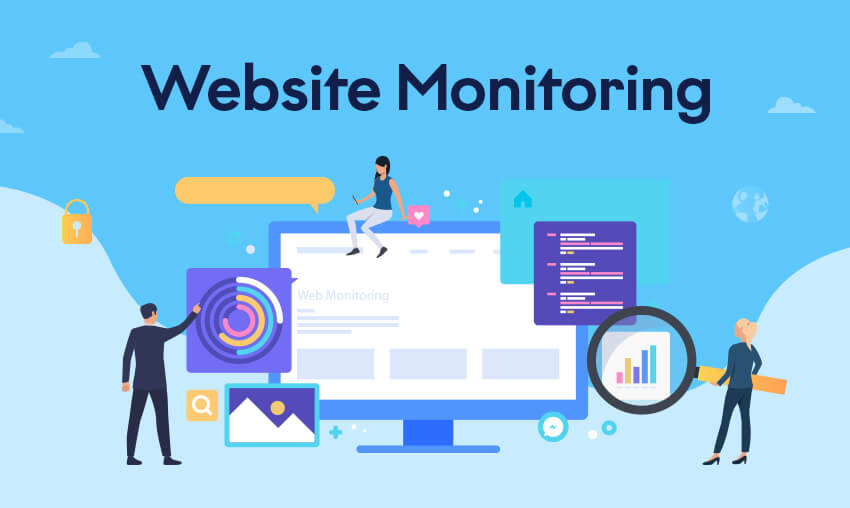The most important indicator for any website is its accessibility to users. It literally means the ability of any visitor to enter the website without problems and access the content. An indicator of the accessibility of any website, as well as any web resource in general, is the uptime. It is measured in the percentage ratio between the time of the existence of the web resource and the time of its smooth operation. And every website owner wants the uptime to be as close to 100% as possible. Therefore, it is important to keep track of this indicator. This means that the webmaster needs to monitor the website around the clock.
Table of Contents
Importance of website uptime
The uptime of the website is the most important metric of the website. It is measured in percent and is a critical value. The uptime value also determines the position of the website in the search results. Moreover, it plays an important role for advertising systems such as Google Ads. In both cases, with low uptime, the website will lose its position.
In addition, due to the reduced time the website owner may suffer financial and reputational losses. Moreover, regular customers can also find a more reliable competitor if they can’t get their services or products when they want. Not to mention that uptime for search engines and advertising systems is not easy to recover. At least because it’s not static, it’s dynamic. And it’s measured in the long run.
It is therefore very important to ensure the maximum possible uptime. That is, as close as possible to the value of 99.99%. For technical reasons, no website can be accessed 100% of the time over a sufficiently long period. Sometimes hosting restarts or updates servers or provides other services. And to do this, as mentioned above, the webmaster should monitor the website around the clock.
Importance of monitoring of website uptime and various issues
As mentioned in the beginning, to maintain a stable up-time webmaster needs to constantly monitor the website. This involves a whole set of procedures. And this set of various tests and checks becomes more and more, the more functional the website becomes. And over time it becomes simply impossible for an inexperienced webmaster to cope with all the tasks that arise. Since it is necessary not only to monitor the problems, but also to fix them as soon as possible.
In such situations, the ideal solution is to use various services to monitor websites. For example, you can use one of the best online monitoring services – HostTracker. This is not only a functional uptime monitor, but also a complete set of tools for monitoring. At the same time, in addition to the ability to check website status on host-tracker.com, the service also has a database monitor, a server diagnostics service, and many other additional features.
In addition to its extensive functionality, the HostTracker platform has a useful system of instant alerts. The system works in conjunction with any of the available services. It sends alerts, as the name implies, in case of any problems with the website. To do this, the system uses various messengers, as well as classic texting and calling. Thanks to this, the webmaster is always aware of what is happening with the website. And this, in turn, helps to respond quickly to problems and keep the uptime as close to 99.99% as possible.
What Website Elements to Monitor
Earlier, we mentioned website ecosystems as being complex. This complexity results in needing to monitor various elements – which may influence the choice of tools you use to keep an eye on things. Key areas to look towards include:
Uptime
Monitoring uptime is generally done by using a service that sends requests to your web server at regular intervals. The moment the server doesn’t reply, the monitoring service can send a notification to the site administration.
Speed
Many uptime monitoring tools include a server response speed indicator. When the tool sends a request to your web server, it conveniently measures the time taken for a response as well. The metric can be used to gauge the quality of your web hosting server over time.
Security
Perhaps the most complex area of website monitoring is where security is concerned. Aside from threat monitoring, you also have to keep an eye on various elements like the updates for individual components such as WordPress and all the plugins chosen by you.
SiteLock SMART
One first consideration for website monitoring is naturally for security. SiteLock SMART will not just automate scanning for malware but also remove it for you. Having a tool like this for your site will ensure that any embedded malware won’t cause harm to your site or its visitors. Other similar tools you may consider are Sucuri, SiteGuard, and Astra Security.
Freshping
Freshping is just one of many common utilities you can find to monitor website uptime and server response quality. It works by sending common HTML requests and simply waiting for a website to respond. It’s free and can be used to monitor up to 50 websites.
Ahrefs
Monitoring website ranking is something that many owners tend to overlook. It involves a comparison of your site content with everything else online to see where you stand. Used correctly, Ahrefs can contribute significantly to improving your site ranking.
Pingdom
While Pingdom is in some ways similar to Freshping, it’s a much more complete service. Aside from server response and status, Pingdom can monitor and report more detailed information. For example, various aspects of visitor sessions such as device type and location. It’s even able to monitor transaction metrics.
New Relic
New Relic isn’t something that all website owners will be interested in but offers powerful features. It serves as a monitor for your entire website software stack to ensure that every single element is functioning optimally. The level of detail is simply incredible.
SolarWinds
While Pingdom is part of SolarWinds, the company as a whole offers a more comprehensive technical monitoring solution which may be necessary for some websites. It’s able to keep an eye on many things that normally wouldn’t be considered, such as database and network configuration. For web application-based websites, it offers a strong depth of information.











